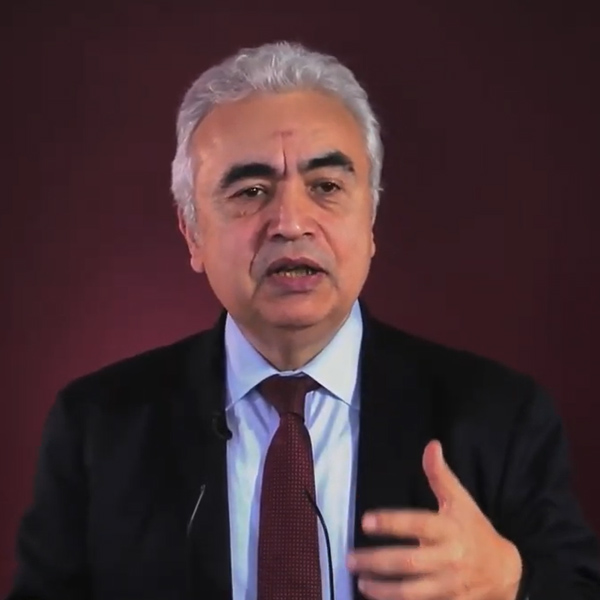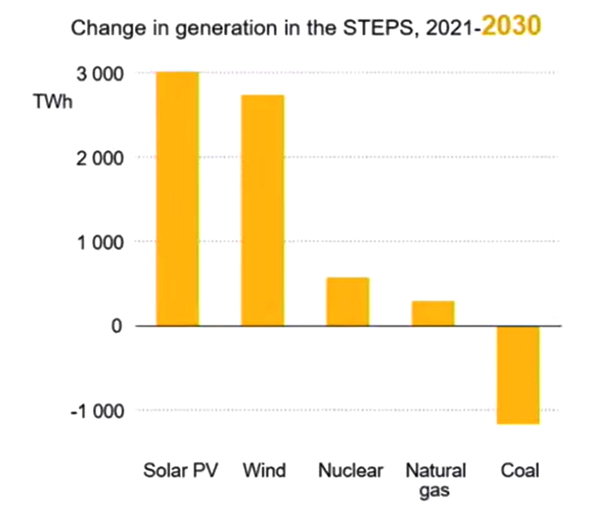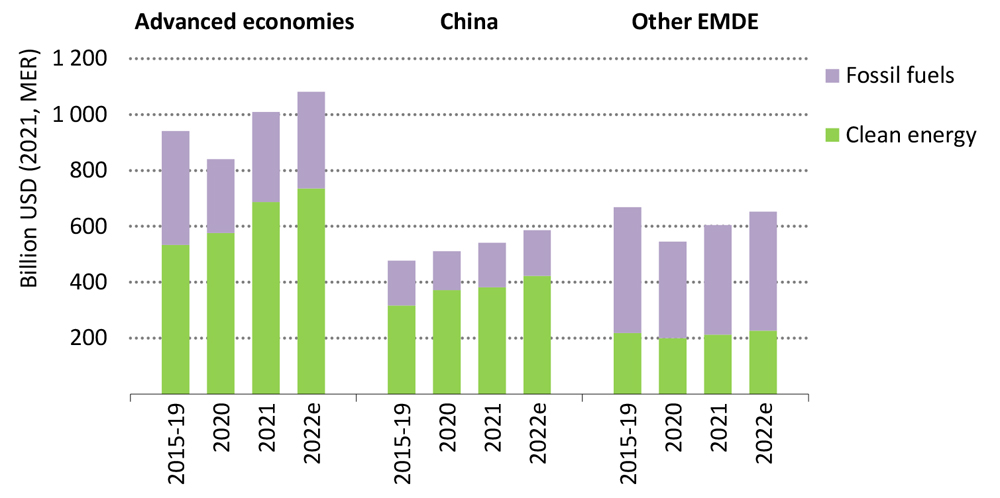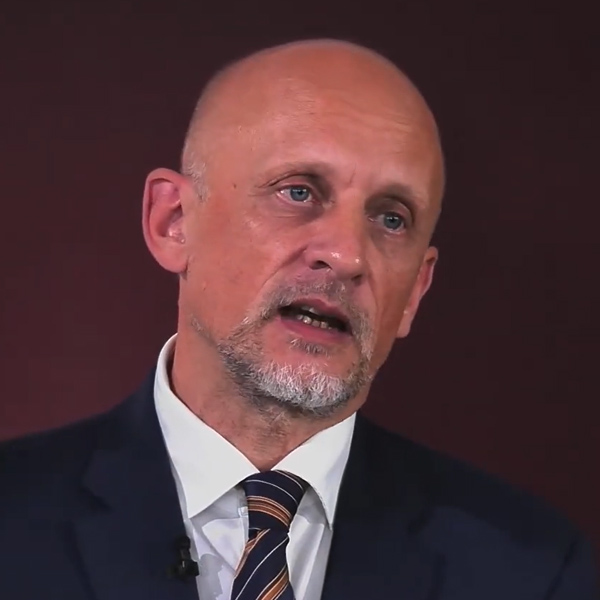
 Fatih Birol, IEA | IEA
Fatih Birol, IEA | IEA
Global use of fossil fuels will peak by 2030, but to reach a worldwide net-zero economy by 2050 — and keep the increase in the global average temperature to 1.5 degrees Celsius — clean energy investments must double to $4 trillion per year at the same time, according to the International Energy Agency’s World Energy Outlook 2022.
The current worldwide energy crisis, triggered by Russia’s invasion of Ukraine, has become “a turning point in the history of energy by accelerating clean energy transitions,” Fatih Birol, IEA’s executive director, said during an online launch event for the report Thursday. “We are seeing an unprecedented increase in different clean energy options — solar PV, wind, batteries, heat pumps, nuclear power, energy efficiency — in all of them.”
Further, Birol said, “the biggest driver of renewable energy in many parts of the world is energy security, not necessarily climate commitments as it was before.” Climate commitments are still important, he said, but another key factor is that “many governments want to be part of the new industrial era based on clean energy manufacturing.”
 Just taking into account current stated policies, IEA projects, the world’s energy supply will depend increasingly on renewables, mostly wind and solar, by 2030. | IEA
Just taking into account current stated policies, IEA projects, the world’s energy supply will depend increasingly on renewables, mostly wind and solar, by 2030. | IEA
Birol pointed to the passage of the Inflation Reduction Act in the U.S.; the EU’s REPowerEU initiative to cut the region’s dependence on Russian fossil fuels by 2030; and Japan’s Green Transformation as evidence of a historic pivot in clean energy policy and investment.
Those policies and investments will trigger a series of turning points in the coming decade, said Laura Cozzi, IEA’s chief energy modeler. “What’s happening is very clear: Clean energy technologies, solar in particular, are becoming very cheap. Supporting policies like the IRA are really helping to make solar even cheaper.
“The expectation is that in the next five years, [global] solar installed capacity will surpass that of coal to become the No. 1 capacity installed for electricity generation,” she said.
Overall, clean energy technologies, including nuclear, will surpass electricity generation from all fossil fuels by the end of the decade, Cozzi said. “We will see a peak in electricity sector emissions very soon, and emissions will start to decline,” she said.
 Laura Cozzi, IEA | IEA
Laura Cozzi, IEA | IEA
The report does see a near-term increase in fossil fuel use and emissions as countries around the world scramble to provide secure, affordable energy for their citizens, and Russia loses its dominance as the top exporter of fossil fuels. Worldwide inflation also means that an estimated 75 million people who recently gained access to electricity will not be able to afford that power, raising the number of people living without electricity for the first time since IEA started tracking those numbers, the report said.
“With energy markets remaining extremely vulnerable, today’s energy shock is a reminder of the fragility and unsustainability of our current energy system,” the report says. “Today’s energy crisis has underscored that, in practice, the future of energy markets is likely to be disjointed, subject to geopolitical friction and prone to regular market imbalances” — in other words, messy.
Synchronizing Change
The report lays out three scenarios for the pace and scale of the global energy transition between now and 2050, based on current stated energy policies (STEPS), the announced pledges countries made at or after the 2021 U.N. Climate Conference in Glasgow (APS) and a net-zero energy goal (NZE).
The STEPS scenario results in a 2.5-degree Celsius temperature increase by 2050 versus an increase of 1.7 degrees in the APS scenario. The NZE scenario hits 1.5 degrees in 2050 and edges down to 1.4 degrees by 2100, the report says.
Ramping up clean energy investment, especially in emerging and developing economies, will be critical for closing those gaps, Birol said.
 Emerging market and developing economies, other than China, account for two-thirds of the global population, but their share of clean energy investment is both low and declining, IEA says. | IEA
Emerging market and developing economies, other than China, account for two-thirds of the global population, but their share of clean energy investment is both low and declining, IEA says. | IEA
Looking toward the upcoming 27th U.N. Climate Conference of the Parties (COP27) in Sharm El Sheikh, Egypt, next month, he said, “It is time for advanced economics, so-called ‘rich’ countries, to show that they are serious about climate change by providing support for the clean energy investment in developing countries, especially in Africa. … I would like to see strong support of advanced economies for African or in general developing countries’ energy transitions, and having empathy for the political, economic and social priorities of the countries in Africa and beyond.”
The report also offers a list of recommendations for minimizing some of the bumps and turmoil of the coming years, beginning with a close synchronization of changing investments in clean energy and fossil fuels.
 Tim Gould, IEA | IEA
Tim Gould, IEA | IEA
“For the next few decades, at least, we will be drawing down a system based on fossil fuels and building one up based on clean energy,“ said Tim Gould, IEA’s chief energy economist. “But we need both parts to function well for the duration of that transformation. … The speed and security of the transition depends on synchronizing changes across the different parts of the energy system.”
At present, for every dollar spent on fossil fuels, $1.50 is spent on clean energy, Gould said. Getting to net zero does not necessarily mean no further investments in fossil fuels, he said, but rather a very different ratio, with clean energy getting $9 in investment for every $1 in fossil fuels.
“Under those circumstances we have choices about how we choose to guard against the possibility of future volatility,” he said.
Flexibility Quadrupled
Still another core element in the transition will be the role of governments in providing “strategic direction” for markets, the report says, noting that current markets “may not be configured to deliver net zero at lowest cost to consumers.
“One early task for governments is to eliminate distortions and barriers that actively hinder energy transitions, such as lengthy permitting procedures, unnecessary trade barriers, inefficient fossil fuel subsidies and outdated market arrangements that favor incumbent producers and technologies,” the report said.
A price on carbon is one solution. “Governments have to take the lead in ensuring secure energy transitions, but they can be significantly assisted by well functioning markets and market mechanisms that reflect the costs of pollution, by bringing in private capital and allocating it efficiently,” the report says.
Other recommendations in the report include:
- prioritizing energy efficiency and demand management. Efficiency is critical now and going forward as houses, cars and other infrastructure built today will still be in use by 2050, the report says. Beyond lowering household electricity bills, efficiency “also brings energy security benefits, especially at a time when the world is moving towards a decarbonized energy system, by reducing strains on fuel markets and the need for costly and uncertain investments in new supply.”
- investing in flexibility. Increasing electrification and electricity demand, coupled with increasing amounts of variable renewable energy on the grid, will require a quadrupling of flexibility by midcentury, the report says. Batteries and demand management are expected to provide a quarter or more of the needed flexibility.
- fostering climate resilience of energy infrastructure. The increasing frequency and intensity of extreme weather events means that “governments need to act to ensure that the system has the ability to anticipate, absorb, accommodate and recover from adverse impacts,” the report says. Noting that both natural gas plants and solar panels are less efficient at high temperatures, the report says, “making reliable climate and weather data publicly available could help energy suppliers better understand potential climate risks and impacts.”



